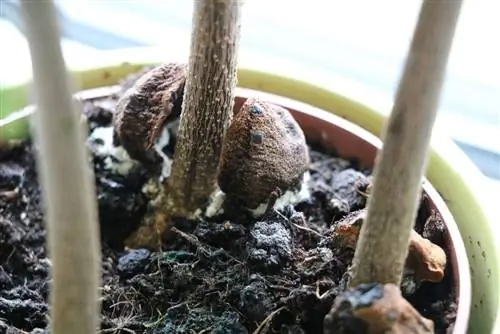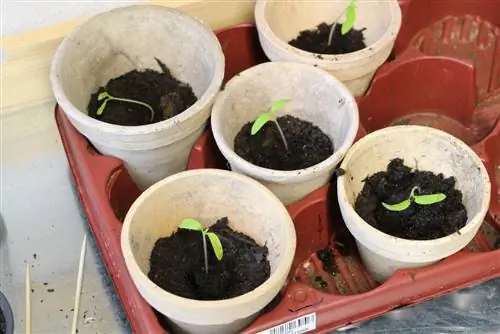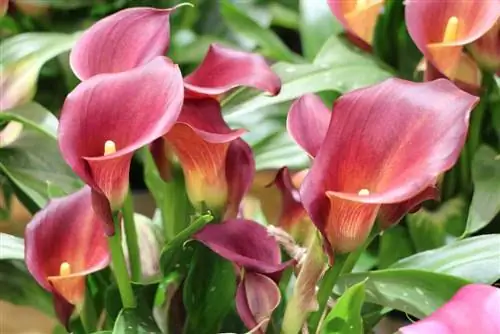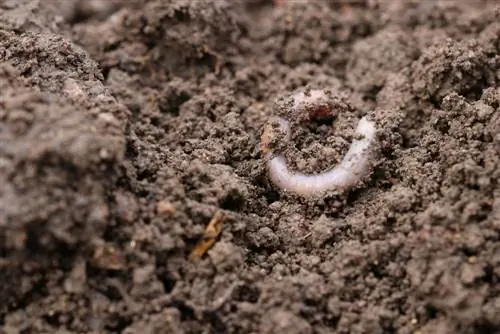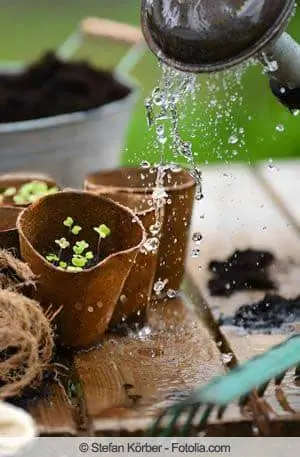- Author admin [email protected].
- Public 2023-12-17 03:39.
- Last modified 2025-06-01 06:48.
Mold on potting soil is not uncommon. Yesterday the earth was still clean, today it is covered in light fluff - a rather unsightly appearance. The following article first deals with where the mold on potting soil comes from. The question should also be clarified as to whether the mold is harmless or represents a source of danger. How can a hobby gardener effectively prevent the formation of mold? What to do if the mold has already spread and developed into a stubborn nuisance?
Where does this mold come from?
This has probably happened to every hobby gardener: just yesterday the flower pot was a feast for the eyes and today there is mold on the surface. A field of fine gray-white fluff has seemingly formed out of nowhere and is spreading. Mold is actually omnipresent because its microscopic spores are found on the roots, in the substrate, i.e. in the potting soil itself, and even in the air. If the mold finds favorable conditions for its growth, it spreads quickly and can even become a nuisance.
Symptom of care error
Favorable conditions for the outbreak of mold plague are particularly present when the plant is watered excessively. This can happen quite quickly: Forgetting that you watered yesterday and quickly pouring a portion of water into the pot. It is not uncommon for people to try to water “in reserve” before the vacation, so that the houseplant literally swims in water. Mold also thrives in sparingly heated rooms and with strong temperature fluctuations. Another reason for the spread of mold is that the substrate is too dense. If air circulation is severely restricted, the mold feels comfortable, but the plant does not.
Mold as a source of danger?
Mouldy soil looks rather unappetizing, but the question arises as to whether mold is also dangerous or just an optical defect. Unfortunately, it must be stated that mold infestation is not harmless at all. On the one hand, the infestation itself indicates that the plant is not being cared for correctly and is feeling unwell. On the other hand, mold quickly becomes a dangerous and quite successful competitor to the plant “in the fight” for nutrients.
So the houseplant receives less and less food, but the mold continues to spread. What's more, mold infestation is not safe for people either. People with chronic or acute respiratory diseases are particularly at risk. If the immune system is weakened due to a previous illness or, for example, chemotherapy, there is a risk of so-called Aspergillus pneumonia. Inflammation of the sinuses, as well as kidney or circulatory problems, can be caused by mold infestation. Allergy sufferers form another group for whom mold could be dangerous.
Fighting mold successfully
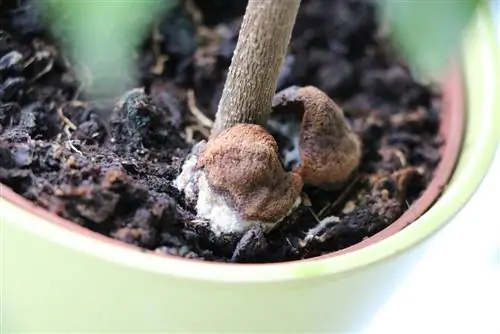
If mold has spread to the surface of the potting soil, it is time to act. Preferably immediately, because unfortunately this plague won't go away on its own. The method is radical and simple: repot into the new substrate.
Proceed as follows:
- Prepare the work surface: Spread out a protective film or newspaper in the garden, on the terrace or balcony, have a flower pot with the plant, a new pot, fresh substrate and a garden shovel ready,
- Carefully pull the plant out of the pot, free the roots as completely as possible from the soil, if necessary under a jet of water (use lukewarm water!),
- Fill 1/4 to 1/3 of the pot volume with the fresh substrate, then place the plant and carefully fill the pot with the potting soil. Leave a distance of 3-5 cm to the top edge, never fill the pot to the brim!
Tip:
The old pot can also be used again if it is not too small. However, this must be cleaned thoroughly with hot water (of course without any cleaning agents).
The old substrate should preferably be disposed of, preferably in the compost heap or as residual waste.
Successfully preventing the infestation - four tips
Make your own potting soil
The commercially available potting soil contains, among other things:a large proportion of peat, which forms a perfect breeding ground for mold culture. In addition, not every plant needs a lot of peat to thrive. The mixture is preferably put together to suit the plant.
Tip:
Coconut humus is a recommended ingredient because it has fungicidal properties. Substrate with a high proportion of sand is less likely to mold than conventional potting soil.
Loose the substrate regularly
As mentioned above, a substrate that is too dense encourages the growth of mold, so it is worth “digging up” the surface of the potting soil from time to time (e.g. once a week).
Tip:
You don't need expensive garden tools for this measure; a simple kitchen fork is usually enough. Especially practical for small pots!
Water less
It is often easier said than done, because water shortage is a rather unknown problem in Europe. But the hobby gardener's generosity causes enormous damage to the plant. It is often noticed too late that the plant is “drowning”. If the roots die, it may be too late for any help. Therefore, preventing mold infestation also means saving plants. Watering through the saucer helps to maintain the correct amount, but it is important that no “standing water” forms in the saucer. Any water that the plant has not absorbed after about an hour should be thrown away. For people who travel often, it is recommended to purchase an irrigation system.
Select a suitable location
Mold loves it moist, shady, but not necessarily warm. Most plants like it sunny to partially shaded, love warmth and can tolerate more drought than mold would like. Therefore, if possible, choose a location that is optimal for the plant, but which the mold does not like.
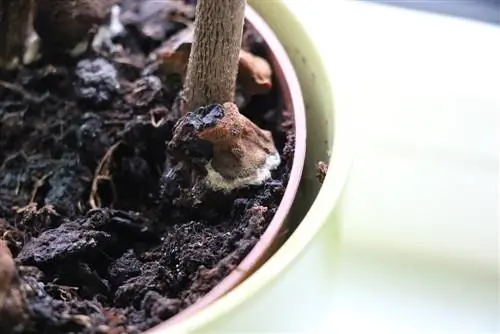
Frequently asked questions about mold infestation
Does it have to be repotted if there is mold?
Repotting promises the most success. Reducing the amount of water and loosening the substrate can help. If the mold doesn't disappear after about a week, it's time to repot.
Which home remedies prevent mold infestation?
Crushed activated charcoal tablet kills spores, cinnamon powder has the same effect. Pour onto the substrate, pour in, do not stir. Tea tree oil can also act as a fungicide in a weak concentration.

